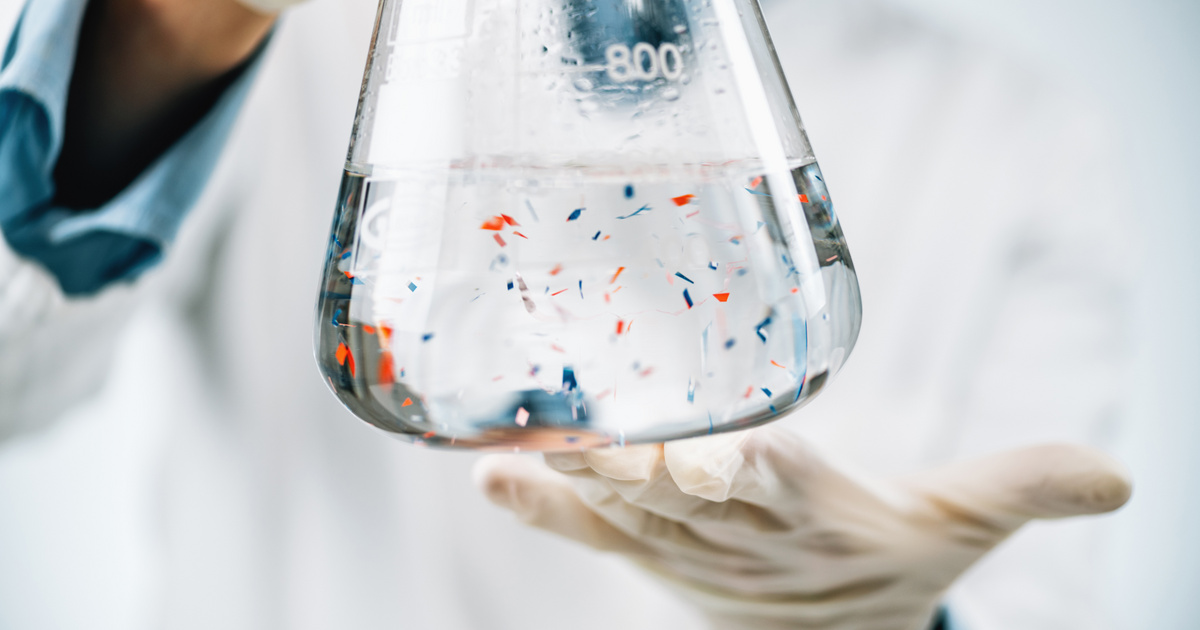Aysegul Tuna and her 10 fellow researchers investigated whether the presence of microplastics, as a global health and environmental protection issue, shows a cause-and-effect relationship with allergic rhinitis. In practice, this means inflammation of the nasal mucosa caused by allergic reactions, usually triggered by pollen, dust mites, animal dander, or other allergens. The prospective research involved 66 people, divided into two groups. 36 patients with allergic rhinitis participated in the first group, while 30 healthy volunteers participated in the second group.
The participants' age and other data relevant to the research were recorded along with the results of the allergic rhinitis score, and then microplastics in the patients' nasal secretions were examined. Comparing the two groups, that is, the results of people with allergies and those without allergies, the study ended with a surprising result. In the allergy group, the density of microplastics in the nasal mucus was significantly higher than in the control group.
The solution: fewer bottles
The results of the allergic rhinitis score showed a clear and significant difference between the allergen group and the healthy control group. Since there were no significant differences between the two groups in terms of age and gender, microplastics may be responsible for the symptoms. According to the researchers, since there are more microplastics in the bodies of patients with allergic rhinitis, it can be concluded that there is a relationship between allergy symptoms and the presence of microplastics.
Although the study was conducted using a relatively small number of subjects, the result certainly revealed another interesting aspect regarding the known and increasing health effects of microplastics, and cardiovascular effects have recently been shown, for example. We can no longer turn a blind eye to environmental pollution, as articles about the harmful health effects caused by plastic appear one after another in well-known and authoritative medical journals.
The doctor told the index. Clinical geneticist Helga Zeke added that it is time to reduce the use of plastics, and simply by buying fewer plastic bottles, we can do a lot for ourselves and our environment.
However, the most effective solution is to eliminate the use of plastic bottles, which for a long time seemed impossible in the absence of an alternative solution. However, according to experts, aluminum bottles can be suitable alternatives to plastic bottles both in terms of recycling and negative impacts on the environment.
Wastewater purification devices against microplastics
At the Hungarian Academy of Sciences, the RISK-MP project consortium recently presented cutting-edge research on microplastics released through municipal wastewater research results. Wastewater treatment plants have been shown to remove microplastics very efficiently even though they were not designed to solve such problems. As a result of the processes that take place during wastewater treatment, only 0.1 to 3 percent of the microplastics that enter the treated water end up in the receiving surface water.
Part of the microplastics that arrive with the wastewater to be cleaned is removed in the mechanical cleaning step along with the litter generated during the mesh filtration. but As waste flows out of sand and grease traps, a significant portion of it ends up in sewage sludge generated during wastewater treatment – he writes in his summary Laboratory.is.
Based on tests, approximately 80 particles can be measured in one gram of dry matter in sewage sludge. Taking into account the approximately 170,000 tons of sewage sludge produced in Hungary every year, this means about 13,000 billion particles, equivalent to 1,320 tons of microplastics by weight.
Families play a leading role
The types of microplastics most frequently detected in sewage sludge were polyester (such as PET), polyethylene, and polypropylene. The specialists who conducted the research highlighted that the primary possibility for reducing the amount of microplastics entering the environment with pure wastewater and sewage sludge is at the point of origin of the wastewater; In other words, the fewer microplastics that enter the wastewater generated in our homes, the less is returned to nature.
Possible ways to do this:
- Do not use cosmetics, wipes, and cleaning products that contain microplastics.
- Use filters that can be installed on washing machines to remove microplastic fibers that are produced during washing,
- And use non-plastic household items whenever possible.
The first regulations on the removal of microplastic components have already appeared in European Community regulations, and further legislation to protect the environment is being prepared.














































